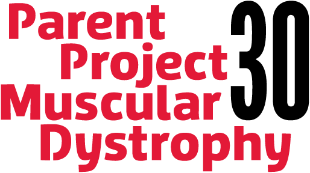Occupational Therapy
Occupational therapists (OTs) are therapists who are able to help individuals across a lifespan participate in occupations/activities that are meaningful and purpose to everyday life. People with Duchenne may find it difficult to achieve the level of independence that they hoped for, especially as they age into adolescence and adult life. An OT can help a person modify or adapt their environment to optimize independence, facilitating the person’s ability to function as independently as possible at home, work, school, and the community.
Goals of Occupational Therapy
The goals of occupational therapy are to maximize functional independence in everyday activities, in addition to addressing school tasks, work or vocational life, leisure skills, hobbies, and can help to facilitate social integration with peers.
Physical Therapy vs. Occupational Therapy Roles
Occupational therapy differs from physical therapy, between facilities, depending on institutional organization and needs (acute care, inpatient and outpatient). Some institutions may offer more overlap in therapy care than others. Physical therapy often focuses on gross motor skills and mobility, with occupational therapy available to focus on fine motor and functional mobility. You will need to ask your neuromuscular team clinic how therapists will work together to meet your needs.
Evaluations by an Occupational Therapist
Occupational therapy may be available in a school settings, in hospitals, or in outpatient clinic. Each setting requires a different set of goals for the patient population served.
A neuromuscular specialist or primary care physician must make a referral to receive OT evaluation except in a school setting. At each visit, an evaluation will be completed to address your current level of function, new or continuing concerns or challenges, and to help to establish a plan of care.
Some reasons for an OT evaluations may include:
- Evaluate self-care skills and make recommendations on techniques or equipment to maximize functional independence.
- Self-care skills could include: eating, grooming, dressing, bathing, toileting, and mobility required for self-care tasks.
- Equipment for self-care tasks: commode chairs, shower chair, hospital bed, hoyer lift, standers, mobile arm supports.
- Evaluate the need for a mobility device; manual wheelchair, power assist wheelchair, or full power wheelchair.
- Make recommendations on environmental access/controls.
- Make recommendations for home modifications to improve access and functional independence.
- Upper extremity range of motion and strength; resting hand splints to maintain wrist and finger range of motion, orthotics to better position a hand for function.
- Make recommendations for school accommodations to improve access to learning; school accommodations (504 plan or IEP); assist with writing or use of technology as an alternative to handwriting.
- Make recommendations and referrals for occupational therapy in different settings including: school, outpatient, and home health settings.
- Provide suggestions to help families advocate for their child, facilitate developmental progression and promote outlets for creativity, social interactions, and feelings of competency.
Interventions
Interventions that may be initiated or assisted by an OT, may include: splinting, adaptive equipment, assistive technology, accommodation programs for school (504 or IEP), pain management, or assisted caregiver training.
Additional Resources
PPMD’s Community Resource Center includes helpful resource on a variety of topics, such as assistive technology and mobility aids and equipment, compiled by families in the Duchenne community.





